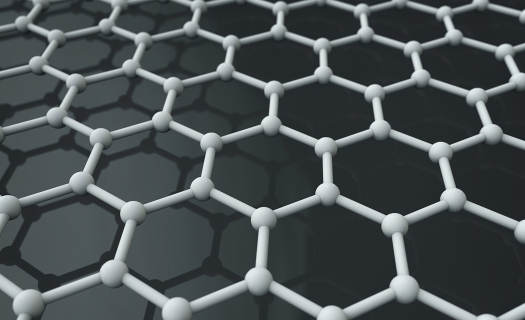Inserting hydrogen between SiC and graphene boosts carrier mobility

The UK National Physical Laboratory's (NPL) Quantum Detection Group has published a study in Nature Scientific Reports that casts a new light on the electronic properties of quasi-free standing graphene (QFSG).
Graphene, a zero band-gap semiconductor, has received significant attention due to its exceptional electronic and mechanical properties. A promising route for the production of material suitable for electronics is growth of graphene on SiC, a wide band-gap semiconductor.
Epitaxial graphene on SiC has advantages of being easily scaled-up to 4 inches in size, good structural quality and it does not require transfer to other substrates. However, the interfacial layer between graphene and SiC reduces the conductivity of the material, limiting applications of pristine epitaxial graphene in high speed electronics.
The NPL study, which was conducted in collaboration with the University of Surrey, UK, and the Institute of Electronic Materials Technology, Poland, showed that the insertion of hydrogen molecules between epitaxial graphene and SiC promotes a dramatic change in the electronic properties of the material, leading to the change of the carrier type and significant increase in carrier mobility.
This is the first research to show nanoscale changes of graphene's electronic and structural properties upon hydrogen intercalation, which decouples the material from the SiC supporting substrate.
By using Kelvin probe force microscopy, the scientists were able to generate a complete map of the surface potential distribution of graphene layers both for SiC supported epitaxial graphene and QFSG on SiC.
By observing a change in the surface potential distribution between the two systems, directly correlated with information from Raman spectroscopy, the scientists could detect changes in the electronic properties of the graphene layers.
"While electrons are main carriers in pristine epitaxial graphene, in the QFSG the main carriers are holes," Olga Kazakova, principal research scientist, explained.
By performing Hall effect-based measurements, the group also observed a three-fold increase in the conductivity of QSFG, a fundamental feature for future applications in electronics.
Kazakova said that the observed increase in carrier mobility is approaching the world record for this type of materials at room temperature.
Once the formation of QFSG through hydrogen intercalation has occurred, the material changes its electronic properties and shows a high electrical mobility.
"In our work, we showed for the first time how this process occurs on nanoscale," Kazakova said.
The study also demonstrates that Kelvin probe force microscopy is a powerful technique to provide very detailed information on surface phenomena.
'Carrier type inversion in quasi-free standing graphene: studies of local electronic and structural properties' by Christos Mellos et al, Scientific Reports 5, Article number: 10505

































